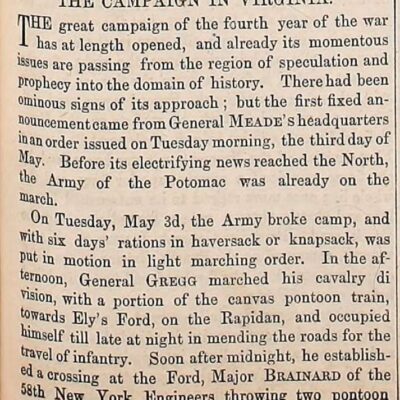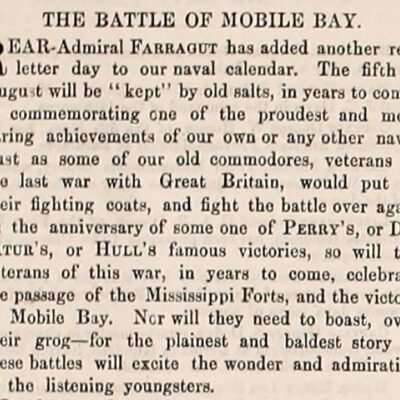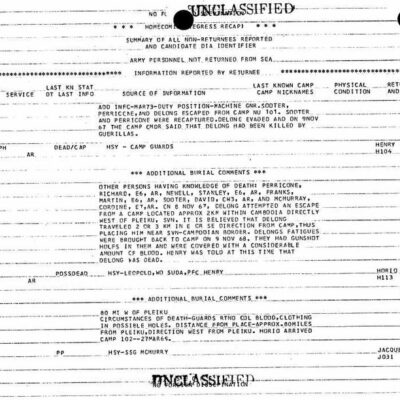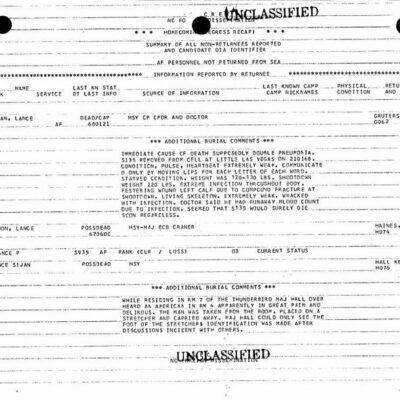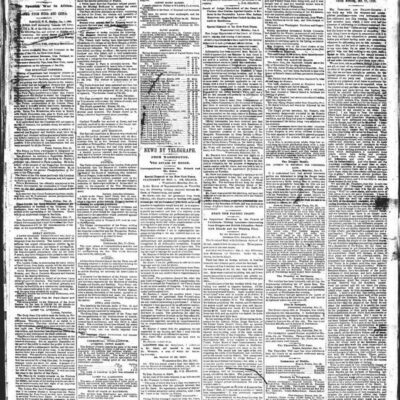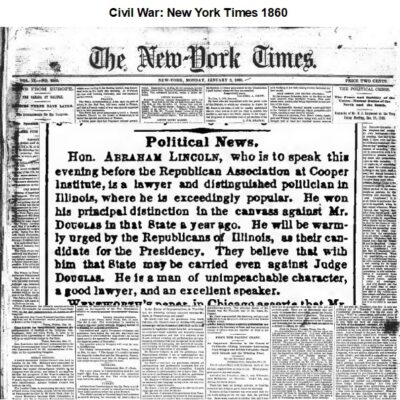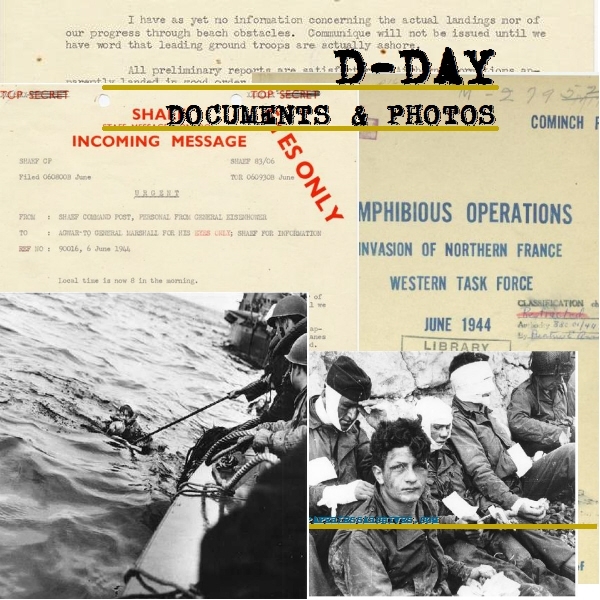


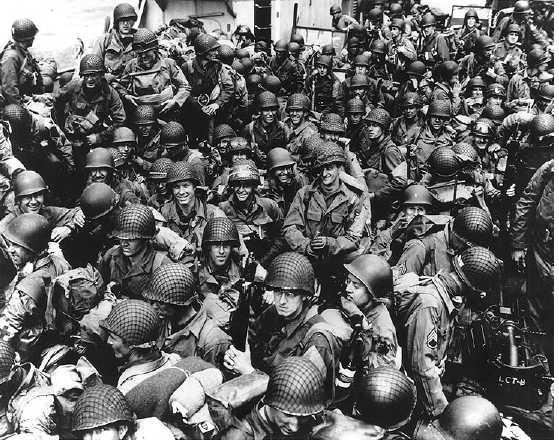
D-Day: Invasion of Normandy – Operation Overlord Documents and Photos
$19.50
Description
D-Day and Operation Overlord: Timeline and Key Figures
Timeline of Events (D-Day and Operation Overlord):
- Spring 1944: General Dwight D. Eisenhower, as the Allied Supreme Commander in Europe, is preparing to initiate Operation Overlord, the invasion of Europe. He delays it by a month to gather necessary landing craft.
- Late Evening, June 2, 1944: Eisenhower, his top generals, and Winston Churchill meet to review the weather forecast for June 5th. The forecast is poor, with cloudy skies, rain, and heavy seas predicted.
- June 5, 1944: Eisenhower decides to postpone D-Day due to unfavorable weather conditions.
- Less than 24 Hours Before Scheduled Invasion: Eisenhower gathers advisors. Forecast indicates improvement by mid-afternoon June 5th. Eisenhower changes D-Day to June 6th.
- June 6, 1944 (D-Day): Operation Overlord commences with the landing of five naval assault divisions on the beaches of Normandy (Utah, Omaha, Gold, Juno, and Sword). A large naval bombardment begins at 0550 to detonate minefields along the shoreline. Over 133,000 Allied troops land on D-Day.
- June 6 – June 17, 1944: The 16th Infantry Regiment records journal entries about the events that took place in Normandy during this time period.
- June 8, 1944: Eisenhower sends a SHAEF message reporting on the D-Day landing area.
- June 6 – July 8, 1944: The 82nd Airborne Division participates in “Operation Neptune” at Normandy.
- June 30, 1944: Over 850,000 men, 148,000 vehicles, and 570,000 tons of supplies have landed on the Normandy shores.
- July 21, 1944: Headquarters of the 22nd Infantry issues an After Action Report.
- August 1944: Debriefing Conference on D-Day, 82nd Airborne Division Report.
- May 7, 1945: German General Alfred Jodl signs an unconditional surrender at Reims, France, effectively ending World War II in Europe.
Cast of Characters:
- Dwight D. Eisenhower: (1890-1969) Supreme Commander of the Allied Expeditionary Force in Europe during World War II. He made the crucial decision to launch Operation Overlord and oversaw its execution.
- Winston Churchill: (1874-1965) Prime Minister of the United Kingdom during World War II. He played a vital role in Allied strategy and supported the planning of D-Day.
- George Marshall: (1880-1959) U.S. Army Chief of Staff during World War II. He was a key architect of Allied strategy and supported Eisenhower’s appointment to command Operation Overlord.
- Franklin D. Roosevelt: (1882-1945) President of the United States during World War II. He appointed Eisenhower to command Operation Overlord.
- Joseph Stalin: (1878-1953) Leader of the Soviet Union during World War II.
- William J. Donovan: (1883-1959) Director of the Office of Strategic Services (OSS) during World War II. The OSS provided intelligence support for Operation Overlord.
- Alfred Jodl: (1890-1946) German General who signed the unconditional surrender at Reims, France, in May 1945.
D-Day: Invasion of Normandy – Operation Overlord Documents and Photos
D-Day Invasion of Normandy – Operation Overlord Documents and Photos
This collection features 192 pages of documents and 158 photographs related to D-Day and Operation Overlord.
“D-Day” refers to the initial day of any military campaign. It has specifically come to signify the most significant Allied operation in World War II, which was the Normandy invasion. The collection includes original notes, reports, correspondence, and meeting minutes, as well as photographs taken before, during, and after D-Day. These images were captured by photographers from the Army, Marine Corps, Navy, and Coast Guard. Additionally, there are photos documenting D-Day activities in New York City taken by The Office of War Information.
In the spring of 1944, General Dwight D. Eisenhower, the Supreme Commander of Allied forces in Europe, faced a critical decision regarding World War II. He had hundreds of thousands of soldiers, sailors, and airmen ready for his commands to initiate Operation Overlord, the invasion of Europe. Eisenhower had already postponed Overlord for a month and delayed other military operations to give the Allies sufficient time to prepare the necessary landing craft. He ultimately set June 5, 1944, as the operation date.
The Allied strategists recognized that they could not influence the weather on D-Day. Late on June 2, 1944, Eisenhower, along with his senior generals and British Prime Minister Winston Churchill, convened to assess the weather predictions. Unfortunately, the forecast was unfavorable, indicating cloudy skies, rain, and rough seas for June 5. Eisenhower opted to wait an additional day to see if conditions might improve. Less than a day before the planned invasion, he reconvened with his advisors. The updated forecast suggested that the rain would cease and clouds would break by mid-afternoon on June 5. Consequently, Eisenhower decided to reschedule D-Day to June 6. The D-Day operation on June 6, 1944, united the land, air, and sea forces of the allied armies in what is recognized as the largest invasion in history. Codenamed OVERLORD, the mission transported five naval assault divisions to the beaches of Normandy, France. These beaches were designated with the codenames UTAH, OMAHA, GOLD, JUNO, and SWORD. At dawn on June 6, 1944, a massive invasion fleet was positioned off the coast of Normandy, consisting of 9 battleships, 23 cruisers, 104 destroyers, and 71 large landing crafts, along with troop transports and mine sweepers, forming the largest armada ever gathered. The naval bombardment that commenced at 5:50 AM that morning set off substantial minefields along the beach.
The invasion force comprised 7,000 ships and landing crafts operated by over 195,000 naval personnel from eight allied nations. Nearly 133,000 soldiers from England, Canada, and the United States landed on D-Day. The three countries suffered 10,300 casualties during the landing. By June 30, over 850,000 soldiers, 148,000 vehicles, and 570,000 tons of supplies had arrived on the shores of Normandy. On May 7, 1945, German General Alfred Jodl signed an unconditional surrender in Reims, France.
Key points include:
The “Order of the Day” announcement issued to the soldiers, sailors, and airmen of the Allied Expeditionary Force on June 6, 1944.
In the event of a D-Day failure – After deciding on the cross-channel invasion, Eisenhower drafted a press release on paper to be used if needed. The handwritten note by General Eisenhower, titled In Case of Failure, is incorrectly dated “July” 5 instead of “June” 5. A handwritten message from President Roosevelt to Marshal Stalin designates Dwight Eisenhower as the commander of Operation Overlord. General George Marshall included a note for Eisenhower on December 7, 1943.
Operation Policy Memoranda dated January 29, 1944, contain minutes from the 10th meeting of the Supreme Commanders Allied Expeditionary Forces (SCAEF) held on March 20, 1944.
On March 9, 1944, OSS Director William J. Donovan wrote to President Roosevelt.
Naval operational orders for the British assault area were issued on May 15, 1944.
A memo regarding the situation in Normandy was created on June 3, 1944.
The Eighth Air Force provided a report on the Normandy invasion covering the period from June 2 to June 17, 1944.
A report detailing the amphibious operations for the invasion of Northern France by the Western Task Force of the United States Fleet was produced in June 1944.
An incoming message from General Eisenhower to General Marshall discussed the initial reports of the Normandy landing on June 6, 1944.
Journal entries from the 16th Infantry Regiment were recorded between June 6 and June 17, 1944.
On June 8, 1944, General Eisenhower sent a message reporting on the D-Day landing site.
From June 6 to July 8, 1944, the Eighty-Second Airborne Division submitted a report titled “Operation Neptune” regarding Normandy.
The After Action Report for the 115th Infantry was completed in June 1944.
On July 21, 1944, an After Action Report was submitted by Headquarters of the 22nd Infantry.
In August 1944, there was a debriefing conference regarding D-Day, which included the report from the 82nd Airborne Division.


